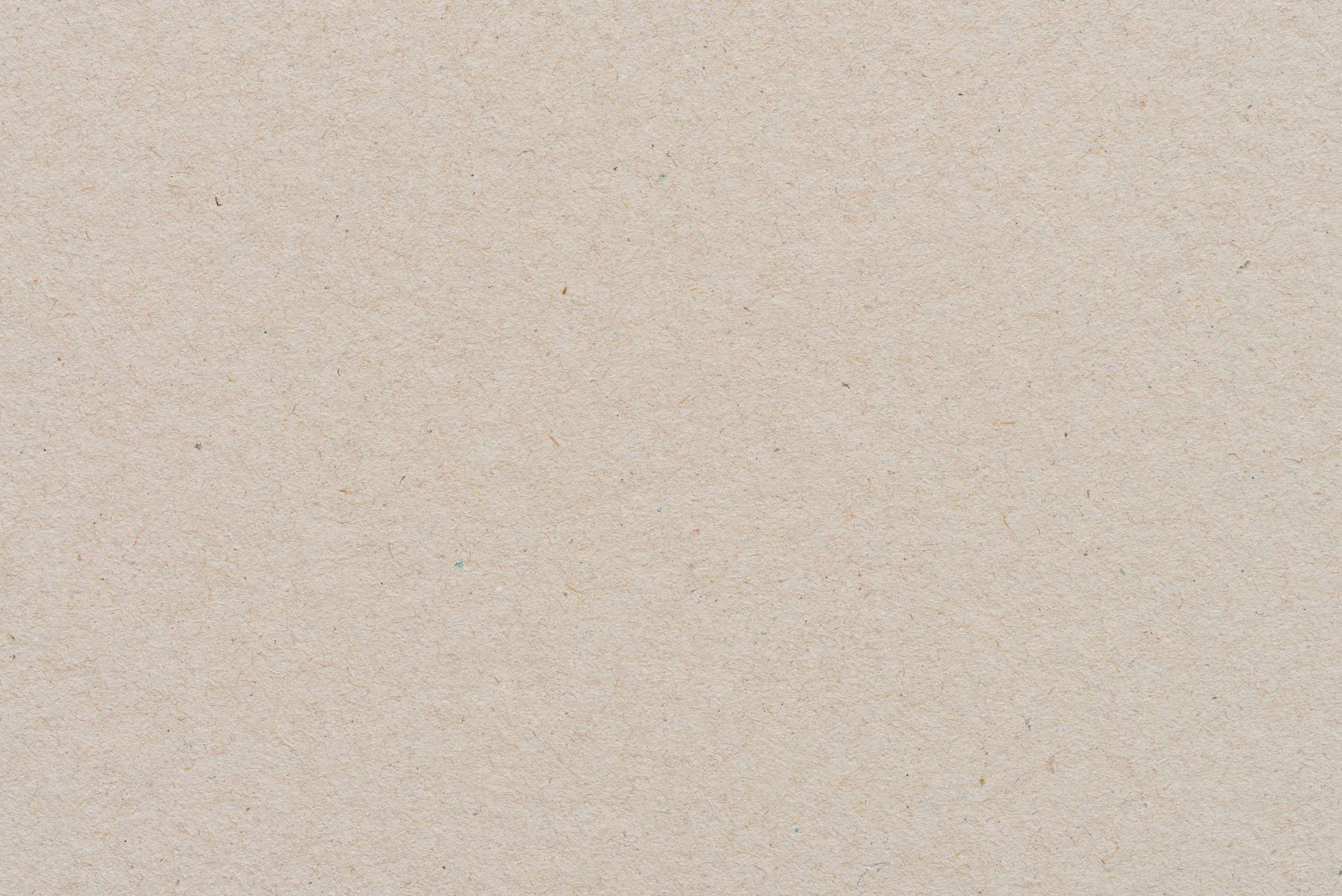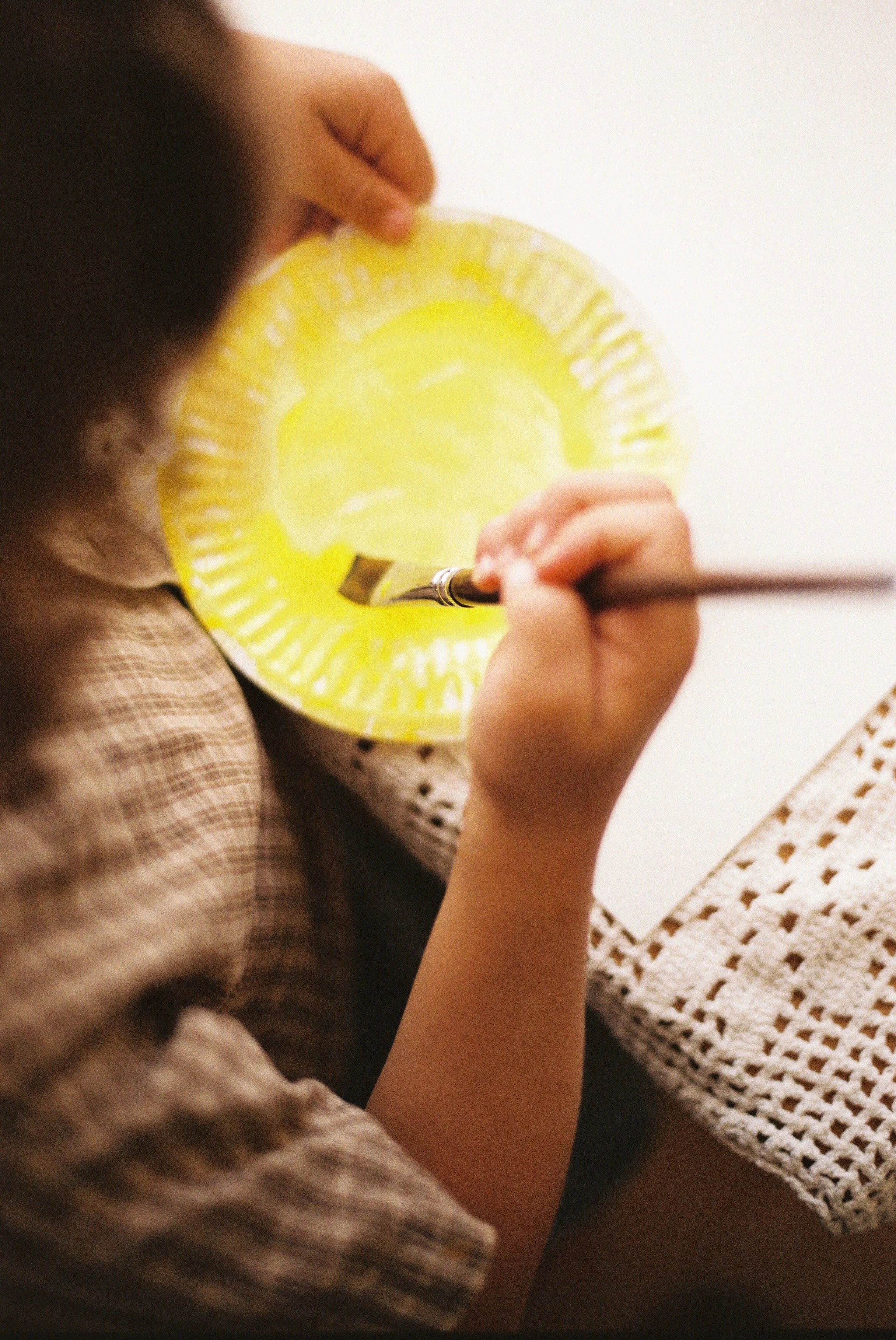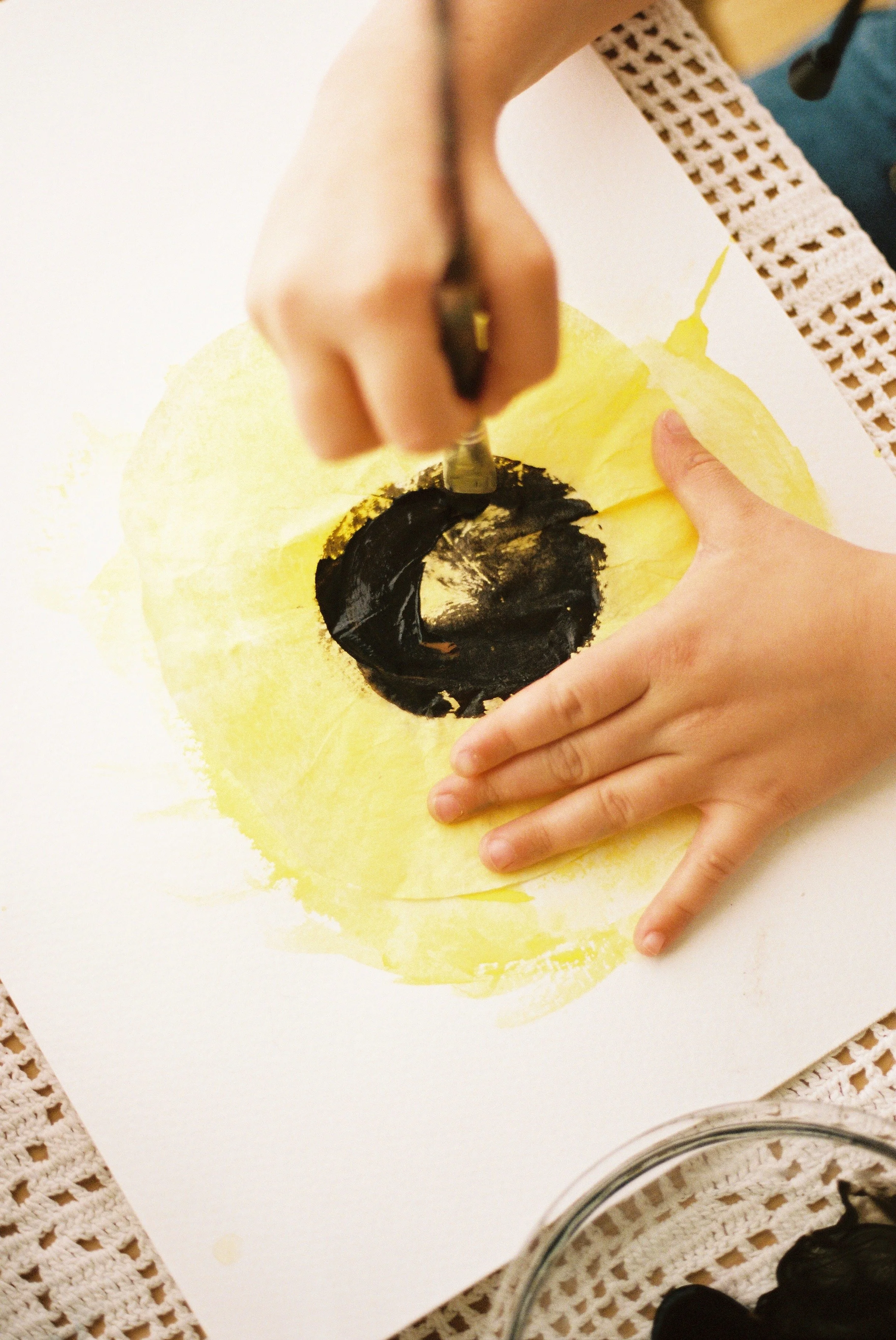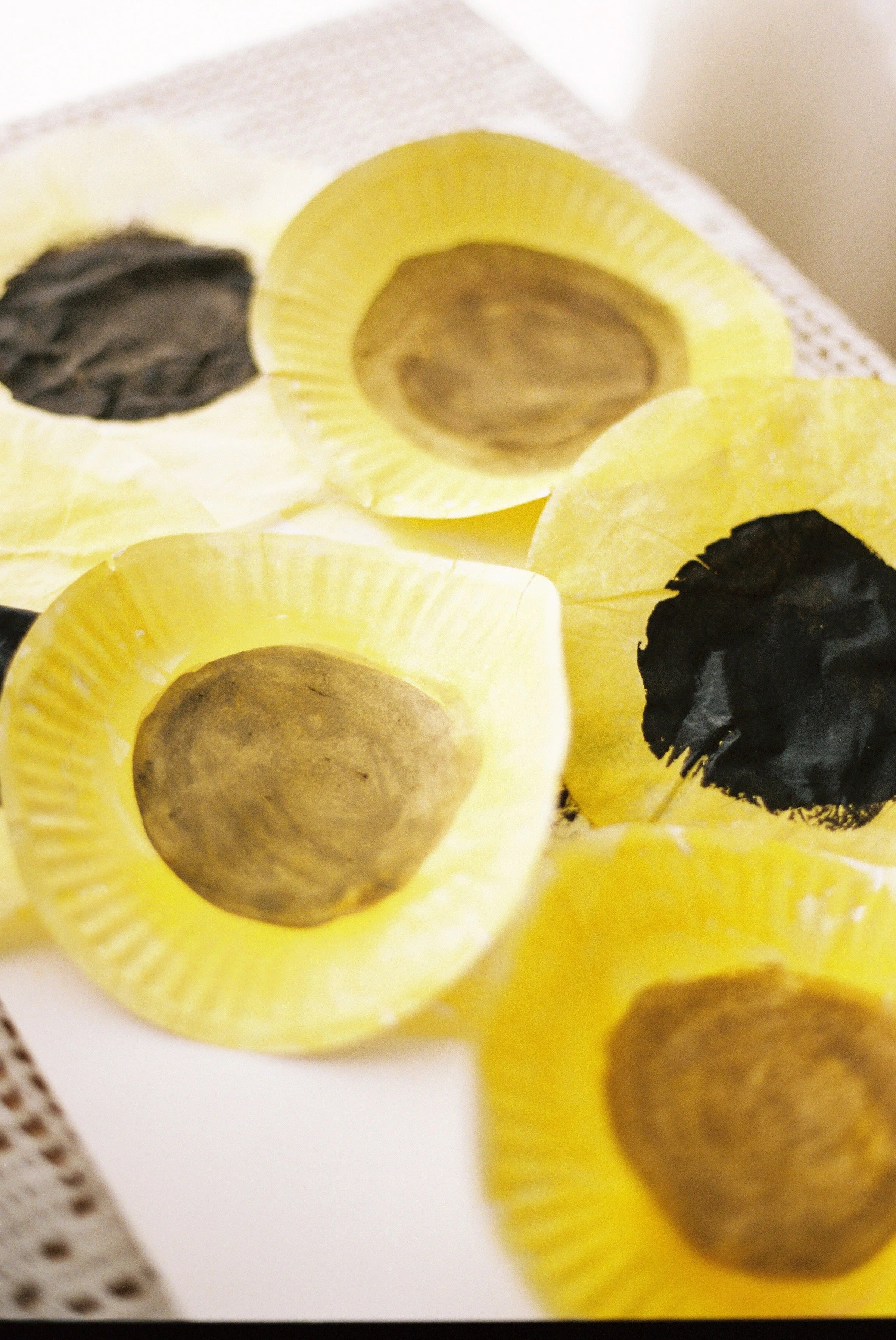
Apple Science
LESSON 6
Children explore a variety of concepts conducting hands-on apple experiments.
Apple boat activity:
The book “Autumn,” by Gerda Muller
Fabric scraps
Hot glue gun and hot glue sticks
Scissors
Twigs
Apples
Dancing appleseed activity:
1 large glass jar
Sprite
Apple seeds
Apple experiment:
6 small glass jars
Apple slices
Vinegar, milk, baking soda, and lemons
Materials
Gather materials needed for this lesson.
Preparations
Apple Boat Activity:
Guide children through an experiment where they predict and observe whether apples float or sink in water.
Facilitate a discussion on why apples float, connecting the concept to the air content within apples.
Assist children in collecting materials and constructing apple boats, promoting fine motor skills, creativity, and outdoor exploration.
Encourage imaginative play as children test their apple seed boats in water.
Dancing Appleseeds:
Guide children in observing the movement of apple seeds in carbonated liquid and explaining the phenomenon, encouraging scientific inquiry.
Support children's understanding of how carbonation interacts with the apple seeds to create movement, linking it to prior knowledge about apples floating.
Pose questions to prompt children's observations and engage in discussions about the behavior of apple seeds in the carbonated liquid.
Apple Experiment:
Supervise the apple experiment, ensuring safety while handling materials and utilizing scientific tools.
Collaborate with children to prepare apple slices, label jars, and fill them with various liquids, fostering teamwork and measurement skills.
Prompt children to make daily observations of the apple slices' changes.
Guide discussions comparing the effects of different liquids on apple browning, aiding children in analyzing their observations and drawing conclusions.
Facilitate a reflective conversation about the experiment's outcomes, supporting children in understanding the role of liquids in preventing apple browning and promoting critical thinking.
Objectives for Teachers
Apple Boat Activity:
Children predict whether an apple will sink or float in water and conduct an experiment to observe the outcome.
Children explain why the apple floated instead of sinking, linking it to the concept that apples contain air.
Children collect twigs and design sails to construct apple boats, experimenting with sail size and testing them in water.
Children engage in outdoor play, sailing their apple seed boats in water.
Dancing Appleseeds:
Children observe and describe the movement of apple seeds in carbonated liquid and explain the phenomenon of rising and sinking.
Children answer questions about their observations, linking the activity to the concept of apples floating in water.
Apple Experiment:
Children participate in an experiment exploring the browning process of apple slices when exposed to different liquids.
Children collaborate in preparing apple slices and placing them in jars with various liquids.
Children make daily observations of the browning process in each jar, documenting changes in color, texture, and appearance.
Children compare and discuss the differences in apple browning among the jars with different liquids and the control.
Children analyze the effects of different liquids on apple browning, draw conclusions from their observations, and understand the role of certain liquids in preventing or slowing down browning.
Objectives for Children

Collect and Connect
Play a simple game.
Practice saying the poem with the actions you came up with.
Apples, Oh, Apples
Apples, oh, apples
Rosy and round,
Fall and tumble,
All over the ground.
Don’t roll too far,
And hide your bright face.
For in my basket,
I will find you a place.

Activity Flow
Participate in one or more of the activities below:
Apple Boat Activity:
To begin this activity, take an apple and ask your child what they think will happen if you place the apple in water–will it sink or float? Conduct the experiment using a bowl of water, allowing them to place the apple in to observe the outcome. Afterward, encourage your child to share why they think the apple floated instead of sinking. Then, slice the apple in half from top to bottom removing any seeds and setting aside for the ‘dancing apple seeds’ activity. Observe the inside of the apple and explain that apples are made up of about 25% air. Similar to a floatie we blow up with air to keep us afloat at the swimming pool, the air inside the apple keeps the apple afloat.
Turn to the opening page of "Autumn" by Gerda Muller, revisit the picture, and discuss the depicted autumn activities. Notice the boats in the puddle and tell your child that you thought it would be fun to make boats using apples.
Venture outdoors to gather lightweight twigs for constructing boat frames. Utilize fabric scraps to design sails inspired by the story's boats and real sailboats. Experiment with sail size, as smaller and lighter sails prove more effective, avoiding capsizing issues. Test the sails in water in the sink and once successful, take them to a pond for play. A gentle stream would also be a fun option for apple seed boat races.
Dancing Appleseeds:
Take the apple seeds you saved from previous activities and make sure they are clean and dry. Test them in normal water to see if they sink. Apple seeds should sink, however we had a few that floated. For this experiment, use the seeds that sink.
Pour some Sprite or the clear carbonated beverage into the glass or plastic cup. Note: We diluted our carbonated drink with some water because initially our seeds wouldn’t sink. The carbonation was too strong and kept them afloat.
Gently drop a few apple seeds into the cup with the carbonated liquid. Sit and observe what happens to the seeds. Notice out loud with your child what is happening. Invite your child to watch closely as the seeds start to move up and down. Here are some questions you might ask:
What do you notice?
Why do you think the seeds are floating up to the top?
Why do you think they sink back to the bottom?
How is this activity similar to what we learned about apples floating in water?
4. Explain to your child that the carbonation in the liquid is releasing tiny bubbles of carbon dioxide gas. These bubbles attach to the rough surface of the apple seeds, causing them to rise and move around.
Apple Experiment:
By now, your child may have noticed that apples turn brown after slicing them open. In this experiment, we'll explore this phenomenon further by testing different liquids' effects on apple browning.
Make sure you have all the materials ready on your workspace: an apple, a knife or apple slicer, 6 glass jars, water, baking soda, vinegar, milk, and lemon juice.
Work together with your child to cut the apple into 6 slices. Try to make the slices as similar in size as possible.
Use sticky notes or labels to mark each glass jar with the following: "Water," "Baking Soda," "Vinegar," "Milk," "Lemon Juice," and "Control" (for the empty jar with only the apple slice).
Put one apple slice into each labeled jar. Carefully pour each liquid into its corresponding jar. Ensure the slices are fully submerged in the liquids.
Place the jars in a well-lit area where they can be observed easily. Over the course of a few days, make daily observations of each apple slice's browning process. Use a notebook to document your observations. Note the changes in color, texture, and overall appearance of each apple slice.
After a few days, compare the apple slices in each jar. Discuss with your child the differences they observe in browning among the different liquids and the control.
Based on your observations, discuss the role of each liquid in preventing or slowing down apple browning. What conclusions can you draw from this experiment? Encourage your child to think about why certain liquids had a more significant effect than others.




